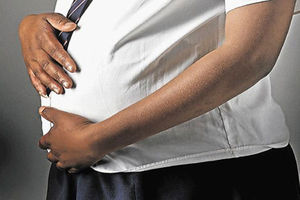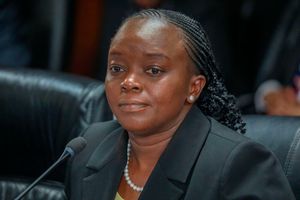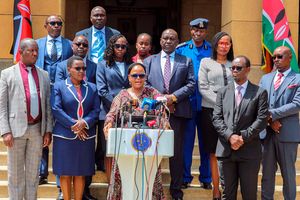Health ministry on the spot over development funds

The Controller of Budget Margaret Nyakang'o.
What you need to know:
- The Health ministry received Sh11.86 billion budgetary allocation in the supplementary budget for the financial year 2024/2025.
The Ministry of Health has been cited among entities with lowest development budget absorption rate in a new report released by the Controller of Budget (CoB).
Health is primarily a devolved function under the Fourth Schedule of the Constitution of Kenya. The ministry is responsible for providing and coordinating health policy formulation, ensuring quality service delivery and regulating healthcare at the national level. The ministry comprises the State Department for Medical Services and the State Department for Public Health and Professional Standards.
According to the first quarterly report released by the CoB, the Health ministry received Sh11.86 billion budgetary allocation in the supplementary budget for the financial year 2024/2025.
The State Department for Medical Services took the lion’s share - Sh91.98 billion (77 per cent) - while the State Department for Public Health and Professional Standards received Sh26.87 billion (23 per cent).
According to the CoB, the high allocation to the State Department for Medical Services was attributed to the high budget allocation in the national referral services programmes.
The funds comprised Sh32.03 billion (27 per cent) for development activities and Sh86.83 billion (73 per cent) for recurrent expenditure, according to the National Government Budget Implementation review between July - September 2024.
While the Health ministry recorded a high absorption rate in recurrent expenditure at 14.88 per cent, implementation of development projects was a sparsely 6.20 per cent compared to the expected rate of 25 per cent.
The report revealed a glaring disparity between programmes with the highest development implementation rate and those with the lowest implementation rate in the sector.
For instance, the State Department for Medical Services spent Sh3.94 billion in project implementation within the first three months under review.
It was ranked among the top 10 ministries, departments and agencies (MDAs) with the highest development expenditure in the first three months of the 2024/2025 financial year, with 28 per cent absorption rate.The department is tasked with promoting health policy, health regulation, national referral facilities, capacity building, technical assistance to the counties, as well as Immunization and Reproductive Health Policy and Management.
It carries out this mandate through agencies such as the Social Health Insurance Fund, the Kenya Medical Supplies Authority, Kenyatta National Hospital, Moi Teaching Referral Hospital, National Syndemic Diseases Control Council and the Kenya Medical Research Institute.
Projects with the highest absorption rates as indicated in the report include Communicable Disease Control and Social Protection in Health in the Curative and Reproductive Maternal New Born Child Adolescent Health (32 per cent) and general administration (29 per cent).
According to the CoB report, the State Department for Public Health and Professional Standards, which received Sh26.87 billion in 2024/2025 Supplementary Estimates, registered an ‘above average’ performance in project implementation. The department recorded the highest absorption for development (33 per cent) and recurrent expenditure (22 per cent).
The State Department for Medical Services recorded 17 per cent development absorption and 16 per cent recurrent expenditure absorption.
“An analysis of the project implementation by the State Department for Public Health and Professional Standards revealed that the cumulative expenditure on equipping of laboratories and classrooms at Kenya Medical Training College project exceeded the budget by 15 per cent,” read the report in part.
In contrast, some programmes recorded extremely low implementation rate such as the central radioactive waste processing facilities under the State Department for Public Health and Professional Standards, which had one per cent absorption rate.
Under the national referral and specialised services, health products and technologies as well as health infrastructure and equipment (specialised medical equipment) had a two per cent absorption rate.
Overall, the Ministry of Health was ranked among three MDAs with the lowest performance, managing merely 10 per cent against 25 per cent expected level of performance.
The ministry, which recorded 19 per cent against the expected 25 per cent on development budget absorption rate, is one of the five entities with the lowest absorption rate.
Regarding recurrent expenditure, the ministry - with 25 per cent absorption rate - came second among top three entities with the highest recurrent expenditure led by Education (26 per cent), while the National Security had (24 per cent).
According to the CoB Margaret Nyakang’o: “The development budget recorded the lowest absorption, implying a likelihood of delayed project implementation in the financial year.”
“Finally, the low level of budget absorption indicates that some planned activities were not implemented.”
The CoB has called upon government entities with low absorption of the development budget to identify other challenges that delay budget absorption and address them in the subsequent budget implementation period.
“Programmes with low budget absorption should be fast-tracked to enhance effective service delivery,” stated Ms Nyakan’go.
“We recommend fast-tracking the sub-programmes, which recorded an implementation rate below 25 per cent as of September 30, 2024.”
The report was prepared in compliance with Article 228 (6) of the Constitution and Section 9 of the Controller of Budget Act, 2016, which require the CoB to submit quarterly budget implementation reports for the national and county governments to Parliament.
It is the second budget under the fourth Medium-Term Plan (2023-2027) of the Kenya Vision 2030 and is being implemented under the Bottom-up Economic Transformation Agenda framework.





